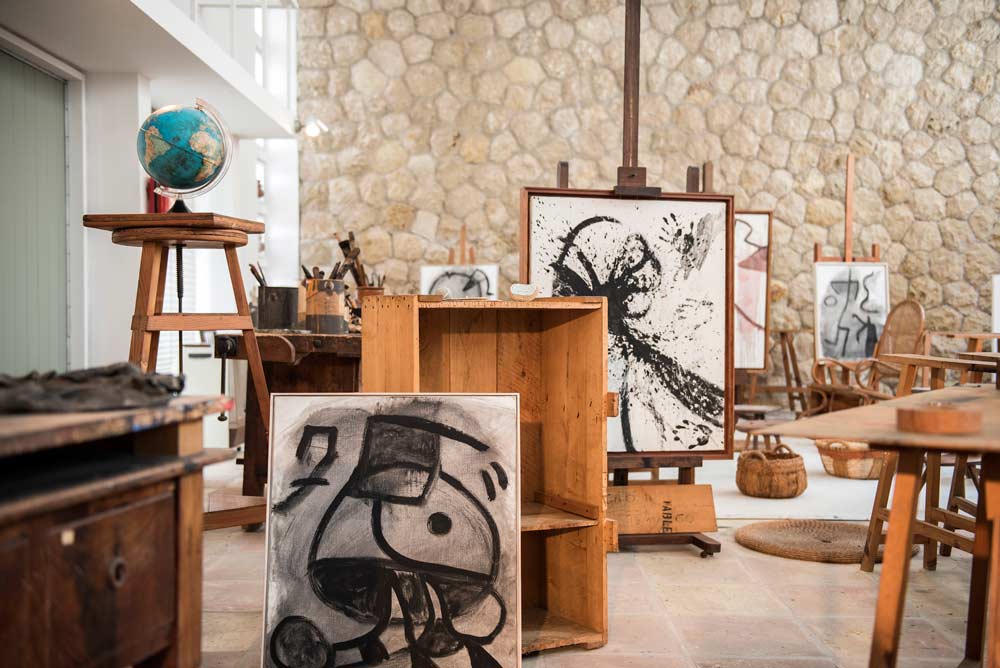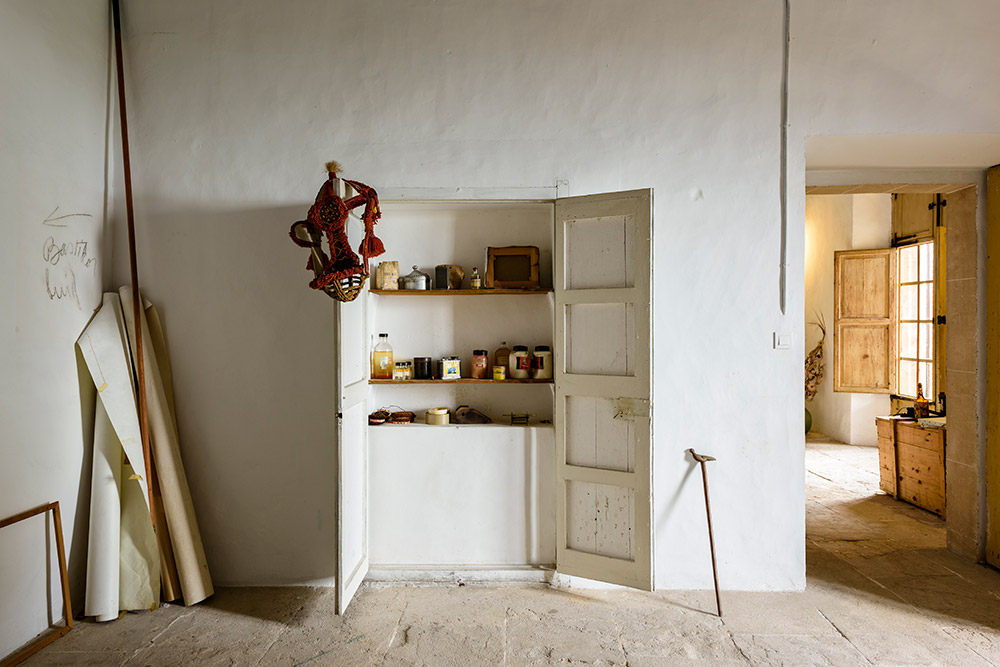Biographical notes
Joan Miró and Mallorca
(Barcelona, 1893 — Palma, 1983)
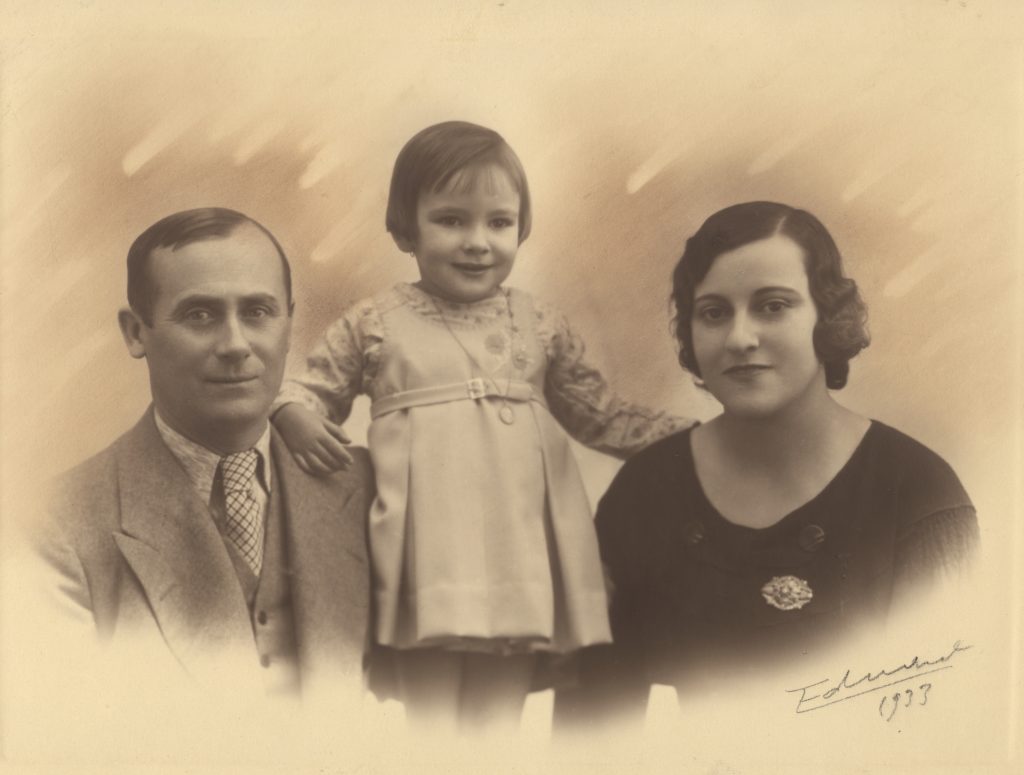
Joan Miró Ferrà was born in Barcelona in 1893. From a very young age, he often used to travel to Tarragona and Mallorca, places whose landscapes would have a profound effect on him. Drawn by the pull of the land, light and sky in both places, they became a source of inspiration, giving rise to some of the characteristic visual images and symbols seen in his work.
Miró’s long intermittent relationship with Mallorca can be divided into three main stages: his Mallorcan stays as a small child and young boy with his maternal grandmother in Sóller, his marriage to islander Pilar Juncosa in 1929, and lastly the period when he made the island his home in 1956 through to his death in 1983.
Mallorca was a superb creative backdrop for Miró, offering him peace, freedom and much sought silence. At the age of 63, he made Son Abrines, in the Cala Major district, his home, finally being able to have the studio of his dreams there – the Sert Studio.
Miró went on to buy a neighbouring 18th century rural house called Son Boter. This allowed him to have a group of studios where over one third of all his work would be created.
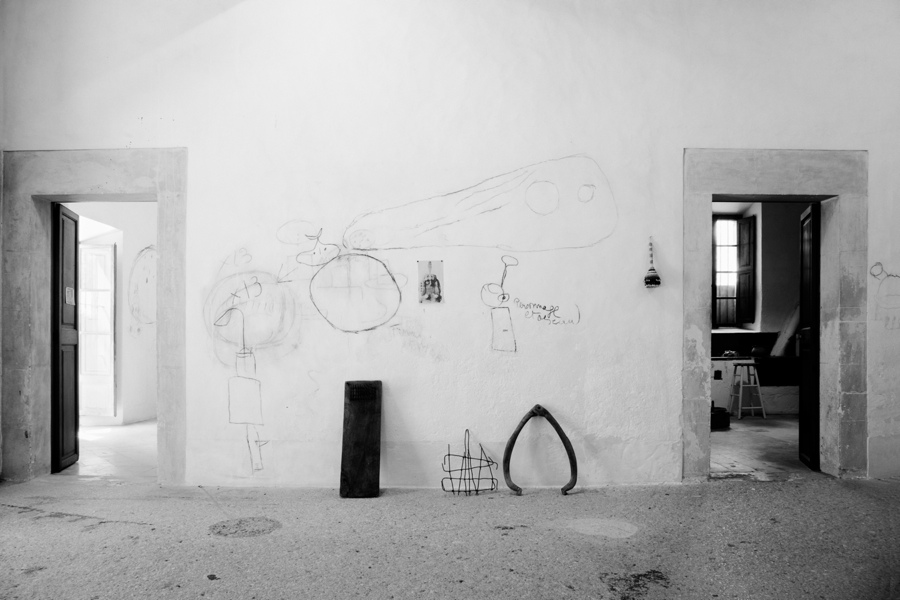
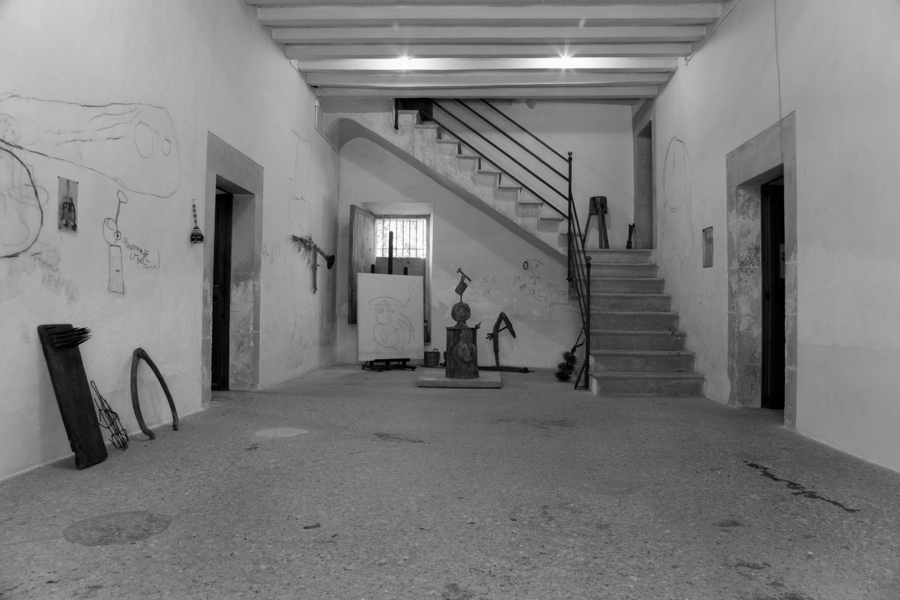
Taillandier, Yvon. "Je travaille comme un jardinier", XXe siècle (París), 16th February 1963.“I work like a gardener”
That final stage was not, therefore, a period of withdrawal but a fertile one, rather like a garden cultivated with dedication and care, to echo a metaphor used by the artist in 1959, when he said “I work like a gardener”. The outcome of that period was work in a wide variety of creative fields, with paintings, sculptures, prints, drawings, ceramics and tapestries. It was a period of reflection and creative synthesis that drove him in new directions, eager to “go further”, as he would say, breaking all the conventional rules of artistic expression.
The work that Miró produced during this stage was non-conformist, severing all ties with his previous art or artistic language. This artistic breakaway and broadening of his horizons is reflected by a greater independence, freedom of expression and radicalism. His eagerness to continue exploring techniques and his constant dialogue with avant-garde movements led to work where the influence of Abstract Expressionism, Oriental art and popular culture is clearly evident.
Miró’s life was ruled by discretion, order and total dedication to creativity, far removed from any kind of extravagance. This contrasts with the strong imaginary, playful or message-related aspect of his work. The huge legacy that he left bears witness to his keen creative labours. As one of his biographers, Jacques Dupin, put it, he was an “applied poet”.
At this stage of his life, Miró was now an internationally famous painter and an artist who worked silently and incessantly. It was a period of almost three decades of intense activity and impassioned aesthetic adventures, and his ability to rise to the challenge and desire to experiment never flagged.
Pilar Juncosa
(Palma, 1904 — 1995)
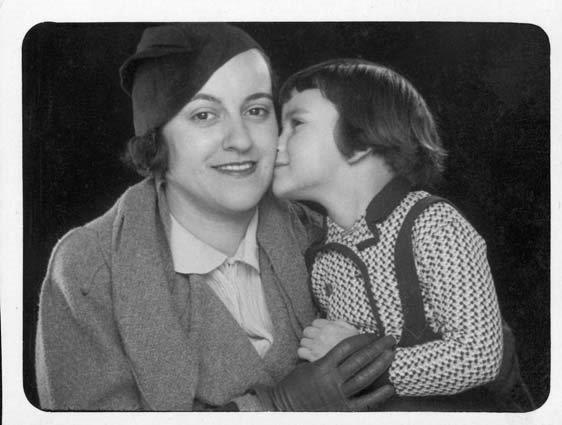
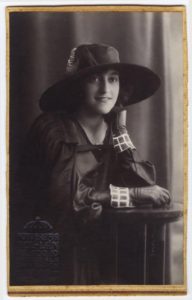
Pilar Juncosa Iglesias, Joan Miró’s wife and benefactor, was born in Palma in 1904. Her parents, Lambert Juncosa and Enriqueta Iglesias, were originally from Catalonia and her mother had family ties to Miró’s grandmother, since they were cousins. In fact, Pilar and Joan’s mothers were brought up together by the Ferrà family (Miró’s grandparents), when Pilar’s mother was orphaned. As a result, there were close links between Pilar Juncosa and Joan Miró right from their childhood.
They were married in 1929 and, one year later, their only daughter, Maria Dolors Miró, was born in Barcelona. During the half century of their marriage, Pilar Juncosa exerted a discrete but considerable influence on the artist. In Miró’s own words: “My wife Pilar is the ideal companion for me. Without her, I would be an orphan lost in this world. Other than my work, I have no idea of anything or how to organize things. She is my guardian angel.”
[1]. Hence they were a stable closely united couple, and this helped to ensure two carefully balanced lives.


Pilar Juncosa stands out for her generosity, and this was fundamental in the creation of the Fundació Pilar i Joan Miró a Mallorca in 1981, when the couple laid its cornerstones by drafting the foundation statutes and donating the artwork and documents that make up the collection. In 1986, following the artist’s death, she raised the need for the construction of a building that would act as the Fundació’s headquarters. She then rounded off Miró’s legacy (the donation of his studios) by announcing that she would donate the land where the museum currently stands and that 42 works would be auctioned at Sotheby’s to finance its construction. This building was opened to the public in 1992.
[1] Raillard, G. Conversaciones con Joan Miró. Granica, Barcelona, 1978
Chronology
1893

Miró with his parents and his sister Dolors, 1902. Archive Successió Miró
On April 20th, Joan Miró i Ferrà was born in Barcelona within a family of traditional craftsmanship. The father, Miquel Miró i Adzaries is a goldsmith and watchmaker. Four years later, his sister, Dolors Miró i Ferrà, was born.
1900
He started his studies at elementary school, where he only finds motivation in drawing classes. On these years, he spent his summer between Cornudella (Tarragona) where his paternal grandparents and in Sóller with his mother’s family (Mallorca).
1906
He makes his first drawing book, where he embodies the landscapes of his childhood, during his stay at his grandparents’ home.
Following his father’s instructions, the following year, he enrolled at the School of Commerce of Barcelona and at the same time he went to the School of Fine Arts of the Llotja, where he studied with Modest Urgell and Josep Pascó.
1908

First oil painted by Joan Miró. Without title, 1908 © Successió Miró 2018. FPJM-116. 1st
Painted his first oil landscape, currently preserved in the Fundació Pilar i Joan Miró a Mallorca.
1910
Miró works at the Dalmau Oliveres drug store. The City Council of Barcelona organizes an exhibition of portraits and drawings, where his work will be exhibited for the first time.
Working at the drug store affects him negatively weakening his state of mind and health. This causes his family to accept his decision, the following year, of dedicating himself exclusively to painting and passing his convalescence in the Masia de Mont-roig. Exhibits at the “VI International Art Exhibition”.
1912
He enrolled at Francesc Galí School of Art in Barcelona, where he met Josep Francesc Ràfols, Enric Cristòfol Ricart and Joan Prats. Draw naked bodies, dancers, circus characters or scenes from the street or the port.
1913
Joins the Artistic Circle of Sant Lluc until 1918. Attends drawing classes and works studying the human figure as a natural model.
1914
World War I begins and Barcelona becomes an exile destination for European artists.
1915
He rented a studio with Enric Cristòfol Ricart that will use until 1916. Iniciates a new friendship with Josep Llorens Artigas.
1916
Get to know the art dealer Josep Dalmau and frequent his gallery, a meeting place for artists refugees from the war. During the summer, he dedicates himself to painting at the Mont-roig farmhouse in Tarragona.
1917
Through Dalmau he meets Francis Picabia. He is interested in poetry and the avant-garde Catalan and French magazines such as North-South by Pierre Reverdy and SIC by Albert Birot.
1918

Article of the newspaper Vila-Nova, February 15, 1918. Calligram on Miró in which the exhibition is announced in the Galeries Dalmau © Archive de la Fundació Pilar i Joan Miró a Mallorca. H-0002
Becomes a member of the Courbet Group. First individual exhibition at the Dalmau Galleries in Barcelona. The First World War ends.
1919
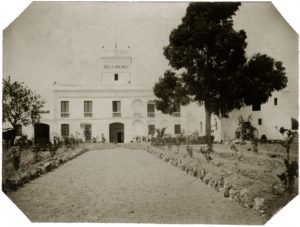
Mas Miró, Mont-roig c.1911. Archive Successió Miró
He moved to Mont-roig and planned a future trip to Paris. Exhibition of drawings at the Courbet Group, at the Layetanas Galleries in Barcelona, an entity that dissolved at the end of the year.
1920
First trip to Paris, where he visits the Picasso workshop. Spend his time visiting museums and exhibitions. He returns to Mont-roig where he makes a series of still lifes compositions.
1921
Second trip to Paris. He works at the studio of rue Blomet in Montparnasse. Get acquainted with André Masson, his neighborhood, and establish friendships with Pierre Reverdy, Max Jacob, Tristan Tzara and Maurice Raynal. First individual exhibition at Galerie La Licorne. Starts painting his famous work La masia, which ends in Paris a year later in 1922.
1922
He exhibits his work La masia in the “Salon d’Automne” in Paris, thanks to art historian, collector and publisher, Léonce Rosenberg.
1923
Get to know the writers Ernest Hemingway, Henry Miller, Jacques Prévert and Benjamin Péret. Paint Metamorphosing the reality and applyes a new system of signs. Coup d’etat of Primo de Rivera in Spain.
1924
Get to know André Breton, Louis Aragon and Paul Éluard. His relationship with poets makes his art approach closer to the concept of poetry and surrealism. Begins to paint “The Carnival of Harlequin”.
1925
He begins to paint fabrics such as pintures oníriques. He participates in the first collective exhibition of “Peinture surréaliste”, along with Max Ernst, Paul Klee, Man Ray, De Chirico, André Masson, Pablo Picasso and Pierre Roy. The catalog of this exhibition is written by André Breton and Robert Desnos.
1926
Pamflet launched by the Surrealists to boycott the premiere of the ballet Romeo and Juliet at the Théâtre Sarah Bernhardt in Paris on May 18, 1926. © Archive of the Fundació Pilar i Joan Miró a Mallorca. H-0074
He works with Max Ernst in the costumes and attrezzo of the Romeo and Juliet ballet, produced by the Russian Ballets of Diaghilev. The surrealist group, contrary to this collaboration, promotes an action of protest. Pierre Loeb succeeds Jacques Vivot as his art dealer. His father dies.
1927
First documented reference of the artist’s desire to “assassinate painting”. It is released in the field of literary illustration with Gertrudis, by J.V. Foix. Participates in his first collective exhibition in the United States at “An International Exhibition of Modern Art Assembled by The Société Anonyme”, organized by Marcel Duchamp and Katherine J. Dreier at the Brooklyn Museum of New York. Meet commissioner and art critic James Johnson Sweeney.
1928
Travel to Belgium and Holland. Paint the Dutch Interiors series. First trip to Madrid where he visit the Prado Museum. Meet the artist Alexander Calder. Compose the first “object-tables” and “collages”.
1929
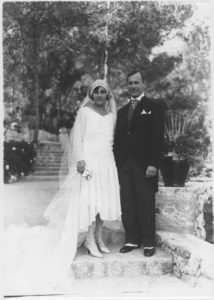
Joan Miró and Pilar Juncosa the day of his wedding in Villa Enriqueta. Palma de Mallorca, October 12, 1929 © Successió Miró
He married the Mallorcan Pilar Juncosa, whom he met on his many summer trips to Palma. They live in Paris until 1932. Make the Imaginary Portraits and the first lithographs to illustrate Tristan Tzara’s book,L’Arbre des voyageurs.
1930
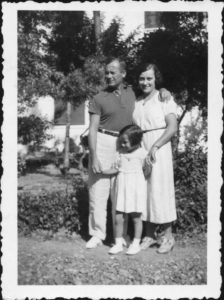
Joan Miró and his wife Pilar Juncosa with his daughter Maria Dolors, 1933.
© Successió Miró
Her daughter Maria Dolors is born. Get to know Artists Pierre Matisse and Alberto Giacometti. Find new alternatives to conventional painting and make its first “constructions”.
1931
He started the series of paintings on Ingres paper and “picto-objects.” The dancer and choreographer Léonide Massine commissioned the decorations and costumes for the ballet Jeux d’enfants . In Spain, the Second Republic is proclaimed.
1932
The economic crisis forces him to settle in Barcelona, where he contacts the members of ADLAN and GATCPAC. Prats introduces Josep Lluís Sert. First individual exhibition of works on paper at the Pierre Matisse Gallery in New York. Pierre Matisse becomes his art dealer in the United States.
Trips to Europe and the United States. 1932-1939.
1933
Miró together with the Russian Ballets company during a break in the “Jeux d’enfants”, Montecarlo, 1932 © Archive of the Fundació Pilar i Joan Miró a Mallorca.
Premiere at the Gran Teatre del Liceu in Barcelona of the ballet Jeux d’enfants. Make the series of eighteen Paintings according to collage and three etchings for the book Enfances by Georges Hugnet. New drawings are published in the Minotaure magazine
Trips to Europe and the United States. 1932-1939.
1934
Meet Wassily Kandinsky. Zervos dedicates him a special number of Cahiers d’Art . Make paintings on frosted paper and the series of great cakes that mark the era of wild paintings.
Trips to Europe and the United States. 1932-1939.
1935
Travel to Brussels, Prague and Berlin. A series of paintings on masonite begins. Premiere of the Harlequin Ballet with costumes designed by Miró. A cover designed by the artist is published in the Minotaure magazine .
Trips to Europe and the United States. 1932-1939.
1936
He participates in two exhibitions at the Museum of Modern Art and at the Pierre Matisse Gallery in New York. The Civil War begins in Spain and he decides to live in Paris until 1940.
Trips to Europe and the United States. 1932-1939.
1937
Miró working on El segador in the Pavilion of the Republic. © Successió Miró
The Spanish government commissioned a mural painting for the Pavilion of the Republic for the Universal Exhibition in Paris, El segador. He made Aidez l’Espagne, a pochoir that originally had to be a stamp to raise funds in support of the Spanish Republic. Participate in the surrealist Nippon Salon exhibition in Tokyo. Shuzo Takiguchi and Tiroux Yamanaka write the text of the catalog.
Trips to Europe and the United States. 1932-1939.
1938
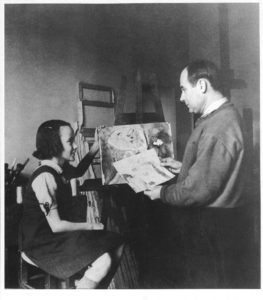
Dolors Miró and Joan Miró, Boulevard Auguste-Blanqui, Paris, 1938. Archive Sucesió Miró
Works the etching and the dry point. Participate in the “Exposition Internationale du Surrealisme” organized by Breton and Éluard at the Galerie Beaux-Arts in Paris. The magazine XXe Siècle publishes “Je rêve d’un gran atelier”, where he expresses his desire to have a great study.
Trips to Europe and the United States. 1932-1939.
1939
He works on the fifty lithographs of the Barcelona Series . Compose a series of paintings on burlap. The Spanish Civil War ends and Franco dictates a dictatorship. The Second World War begins.
Trips to Europe and the United States. 1932-1939.
1940
Shuzo Takiguchi and Joan Miró at his Atelier. Tòquio, 1940. © Archive of the Fundació Pilar i Joan Miró a Mallorca
Constellations begins with the series of 23 gouaches in Varengeville-sur-Mer. He continues working on them in Palma de Mallorca and ends the series in Mont-roig in 1941. He leaves France and settles in Palma. The first monograph on Joan Miró, produced by Shuzo Takiguchi, is published in Tokyo.
Return to the roots. 1940-1953.
1941
He lives in Palma and spends the summers in Mont-Roig where a workshop is built. First great retrospective at the New York Museum of Modern Art, organized by James Johnson Sweeney.53.
Return to the roots. 1940-1953.
1942
He leaves Palma and returns to Barcelona. Works exclusively on paper. Peggy Guggenheim opens its Art of this Century gallery in New York with an exhibition where two works by Miró are selected
Return to the roots. 1940-1953.
1944
This year he moved to the Passatge del Crèdit in Barcelona. Paints on canvas again. He made the first sculptures in cooked mud and ceramic, beginning his collaboration with Josep Llorens Artigas. Finish the Barcelona Series . His mother dies.
Return to the roots. 1940-1953.
1945
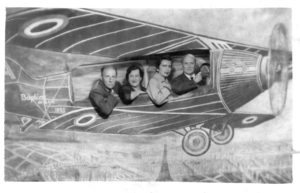
Pierre Matisse, Pilar Juncosa, Patricia Matisse and Joan Miró, 1953. Archive Successió Miró
He exhibits for the first time his Constellations series at the Pierre Matisse Gallery in New York in the exhibition “Ceramics 1944, Tempera Paintings 1940 to 1941”. The Second World War ends.
Return to the roots. 1940-1953.
1946
First bronze sculptures at Foneria Gimeno in Barcelona. Participates in the exhibition “Four Spaniards: Dalí, Gris, Miró i Picasso” at The Institute of Modern Art in Boston. Tristan Tzara asks him for his collaboration in the book’s edition of the work L’Antitête.
Return to the roots. 1940-1953. >
1947

Sketch for the painting of Terrace Plaza Hotel in Cincinnati, ca. 1947. Archives de la Fundació Pilar i Joan Miró a Mallorca. Joan Ramon & David Bonet. © Successió Miró 2018.
First trip to the United States. He is ask to paint a mural for the restaurant at Terrace Plaza Hotel in Cincinnati. It coincides with Jackson Pollock, Louise Bourgeois and Adolph Gottlieb. Gérald Cramer proposes to illustrate Paul Éluard’s bookÀ toute épreuve.
Return to the roots. 1940-1953. >
1948
He lives in Barcelona and continues to travel to Paris. He works at the printing company Mourlot (lithography) and at the Lacourière studio (engraving). Aimé Maeght will become his art dealer in Europe. He exhibits for the first time at Galerie Maeght in Paris.
Return to the roots. 1940-1953. >
1949
Travel to Paris, Mont-roig and Palma. It combines a deep and reflective painting with another gestural and impulsive behavior. Walter Gropius asks for his collaboration in the decoration of the Harkness Commons dining room of the Graduate Center of the University of Harvard.
Return to the roots. 1940-1953. >
1950
Joan Miró with Aimé Maeght, ca. 1950. © Successió Miró
Works on first woodcuts for the book Joan Miró by João Cabral de Melo at the workshop of Enric Tormo in Barcelona. Individual exhibition at Galerie Maeght in Paris.
Return to the roots. 1940-1953. >
1951
Individual exhibition at the Pierre Matisse Gallery in New York. The Harvard mural painting Walter Gropius asks him to decorate the Harkness Commons dining room of the Graduate Center, is included in the exhibition “Sur Quatre Murs” at the Galerie Maeght in Paris. “Exhibition of Painting and Sculpture: Calder-Miró” at the Contemporary Arts Association in Houston.
Return to the roots. 1940-1953. >
1952
He travels to Paris where he visits the exhibition of Jackson Pollock and to Italy (Venice, Verona and Turin). He works on the model for the United Nations mural in New York that he would not get to perform.
Return to the roots. 1940-1953. >
1953
Thomas Bouchard travels to Barcelona to continue the documentary Around and About Miró , started in New York in 1947. Second stage of collaboration with Llorens Artigas at Gallifa.
Return to the roots. 1940-1953. >
1954
Make the seven sculptures Project for a monument from assembling various objects and materials. He participates in the XXVII Biennial of Venice in which he obtains the Grand Prix of Engraving.
The dreamed atelier in Mallorca. 1954-1983.
1955
The construction of the new workshop in Mallorca begins. His activity focuses on ceramics and graphic works. Participate in the Documenta I of Kassel. The UNESCO of Paris commissioned the decoration to project a ceramic wall of its new headquarters.
The dreamed atelier in Mallorca. 1954-1983.
1956
It is definitely established in Palma, in Son Abrines. He works with Josep Llorens Artigas in the murals of UNESCO. The Pierre Matisse Gallery in New York exposes “Miró- Artigas. Terres de Grand Feu “.
The dreamed atelier in Mallorca. 1954-1983.
1957
Visit and study the Altamira’s caves, the Catalan Romanesque painting and the architecture of Gaudí together with Josep Llorens Artigas and his son Joan Gardy to prepare the murals of UNESCO. Jacques Dupin begins to work in what will be the great monograph of the artist.
The dreamed atelier in Mallorca. 1954-1983.
1958
The murals of UNESCO are inaugurated, a project that receives the Guggenheim International Award. Individual exhibition “Peintures sauvages 1934-1953” at the Pierre Matisse Gallery in New York.
The dreamed atelier in Mallorca. 1954-1983.
1959
He travels to the United States for the second time, where President Eisenhower gives him the award of the Guggenheim International Award in 1958. With the award he acquires the mallorcan house (s.XVIII) of Son Boter as a sculpture and a second painting studio, where he later also set up his printmaking workshops.
The dreamed atelier in Mallorca. 1954-1983.
1961
He made his first monochrome triptychs of great dimensions. He traveled for the third time in the United States and granted the insignia of National Member of Fine Arts and Letters of the United States. Jacques Dupin publishes the monograph of the artist.
The dreamed atelier in Mallorca. 1954-1983.
1962
Retrospective exhibition at the Musée National d’Art Moderne in Paris. Travel to Saint-Paul-de-Vence to plan with the architect Josep Lluis Sert the future project of the Labyrinthe Fondation Maeght.
The dreamed atelier in Mallorca. 1954-1983.
1963
He performs monumental sculptures of concrete, iron and bronze. Together with Artigas, he works in sculptures for the Labyrinthe of the Fondation Maeght in Saint-Paul-de-Vence.
The dreamed atelier in Mallorca. 1954-1983.
1964
Inauguration of the Fondation Maeght. Make the model for the monumental sculpture of Chicago.
The dreamed atelier in Mallorca. 1954-1983.
1965
Travel to New York and Chicago. Individual exhibition “Joan Miró: Watercolor and Gouache” at the Donald Morris Gallery in Detroit. The Galerie Maeght in Paris opens the exhibition “Miró: Cartons”.
The dreamed atelier in Mallorca. 1954-1983.
1966
Collaborate with Artiges in the realization of the ceramic sculpture La Déesse de la mer that will be submerged in the Mediterranean in 1968. Miró travels to Japan for the first time on the occasion of the retrospective at the National Museum of Modern Art of Tokyo where he meets Takiguchi. Japanese handwriting will influence his work methods.
The dreamed atelier in Mallorca. 1954-1983.
1967
He is awarded with the Carnegie International Grand Prize for Paintings. He works bronze sculpture at the Fundición Parellada in Barcelona; Susse, Clémenti i Scuderi of Paris; Valsuani de Bagneux and Fratelli Bonvicini de Verona. He made the first painted bronze sculptures. Works with Artiges in the ceramic mural for Salomon R. Guggenheim Museum in New York.
The dreamed atelier in Mallorca. 1954-1983.
1968
Last trip to the United States where he becomes Doctor Honoris Causa by the University of Harvard. The future Fundació Joan Miró de Barcelona is founded. First retrospective exhibition in Spain at the Old Hospital of Santa Creu in Barcelona.
The dreamed atelier in Mallorca. 1954-1983.
1969
Printmaking work occupies an important place in its production. Individual exhibition “Miró otro” at the Col·legi d’Arquitectes de Barcelona, where he performs an ephemeral action. Travels for the second time in Japan.
The dreamed atelier in Mallorca. 1954-1983.
1970
Finalizes two projects of ceramic mural with Artiges for the airport of Barcelona and the Gas Pavilion of the Universal Exhibition of Osaka.
The dreamed atelier in Mallorca. 1954-1983.
1971
He made his first tapestry in collaboration with Josep Royo, the Tapís de Tarragona and works on the model of the tapestry of the World Trade Center in New York. Present the poem and illustrations of Le Lézard aux plums d’or in Paris.
The dreamed atelier in Mallorca. 1954-1983.
1972
Fundació Joan Miró de Barcelona is constituted. He works with Josep Royo in the sobreteixims . The magazine XXe Siècle dedicates a special number to him. Inauguration of “Joan Miró: Magnetic Fields” at the Solomon R. Guggenheim Museum in New York.
The dreamed atelier in Mallorca. 1954-1983.
1973
Several acts are celebrated in Barcelona and Palma de Mallorca to celebrate Miró’s 80th birthday. Make the series of five burned fabrics (Toiles brûlées).
The dreamed atelier in Mallorca. 1954-1983.
1974
Exhibition at the Grand Palais in Paris and at the Musée d’Art Moderne de la Ville de Paris. Sala Gaspar de Barcelona and Galeria 4 Gats inaugurate several exhibitions of the Barcelona Series , 1972-73.
The dreamed atelier in Mallorca. 1954-1983.
1976
Official opening of the Fundació Joan Miró de Barcelona, which has opened to the public exceptionally since the previous year. The theater group La Claca Teatro works on the Mori el Merma , inspired by Ubu . The XXe Siècle magazine dedicates a special issue to Japan.
The dreamed atelier in Mallorca. 1954-1983.
1978
Première at the Teatre Principal in Palma of the show Mori el Merma , a representation for which the characters, the decorations and the objects had been performed by Miró the previous year. The Generalitat de Catalunya and the City Council of Palma awarded him the Gold Medal of the City coinciding with its 85th birthday.
The dreamed atelier in Mallorca. 1954-1983.
1979
He works on the sketch for the mural at the Palacio de Congresos y Exposiciones in Madrid, in the show windows for the Royal Chapel of Saint-Frambourg in Senlis and in the monumental sculpture of the Parc de la Mar in Palma. The stained glass windows of the Fondation Maeght are inaugurated. He becomes Doctor Honoris Causa by the University of Barcelona.
The dreamed atelier in Mallorca. 1954-1983.
1980
He made the mural ceramics at the Palacio de Congresos y Exposiciones in Madrid. King Juan Carlos I delivers him the Gold Medal for Fine Arts.
The dreamed atelier in Mallorca. 1954-1983.
1981
Joan Miró and Pilar Juncosa sign the act of donation of the artist’s workshops to the city of Palma. Première of the ballet L’Uccello Luce with costumes and attrezzo designed by Miró and libretto by Jacques Dupin. Two bronze monumental sculptures are inaugurated in Palma de Mallorca.
The dreamed atelier in Mallorca. 1954-1983.
1983
Miró is 90 years old. The City Council of Barcelona organizes a week of homage to Joan Miró. On December 25, he died at his house in Son Abrines in Palma de Mallorca. He is buried in the cemetery of Montjuïc in Barcelona
The dreamed atelier in Mallorca. 1954-1983.




